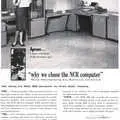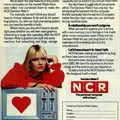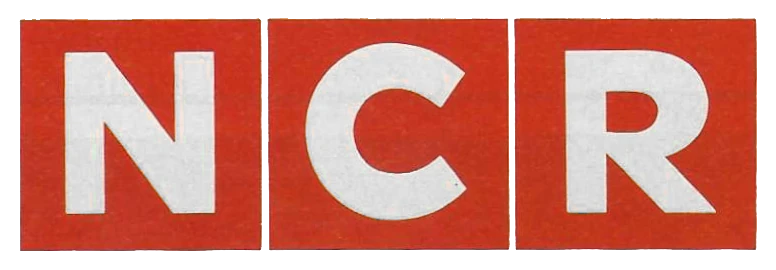
NCR Advert - March 1984
From Personal Computer World
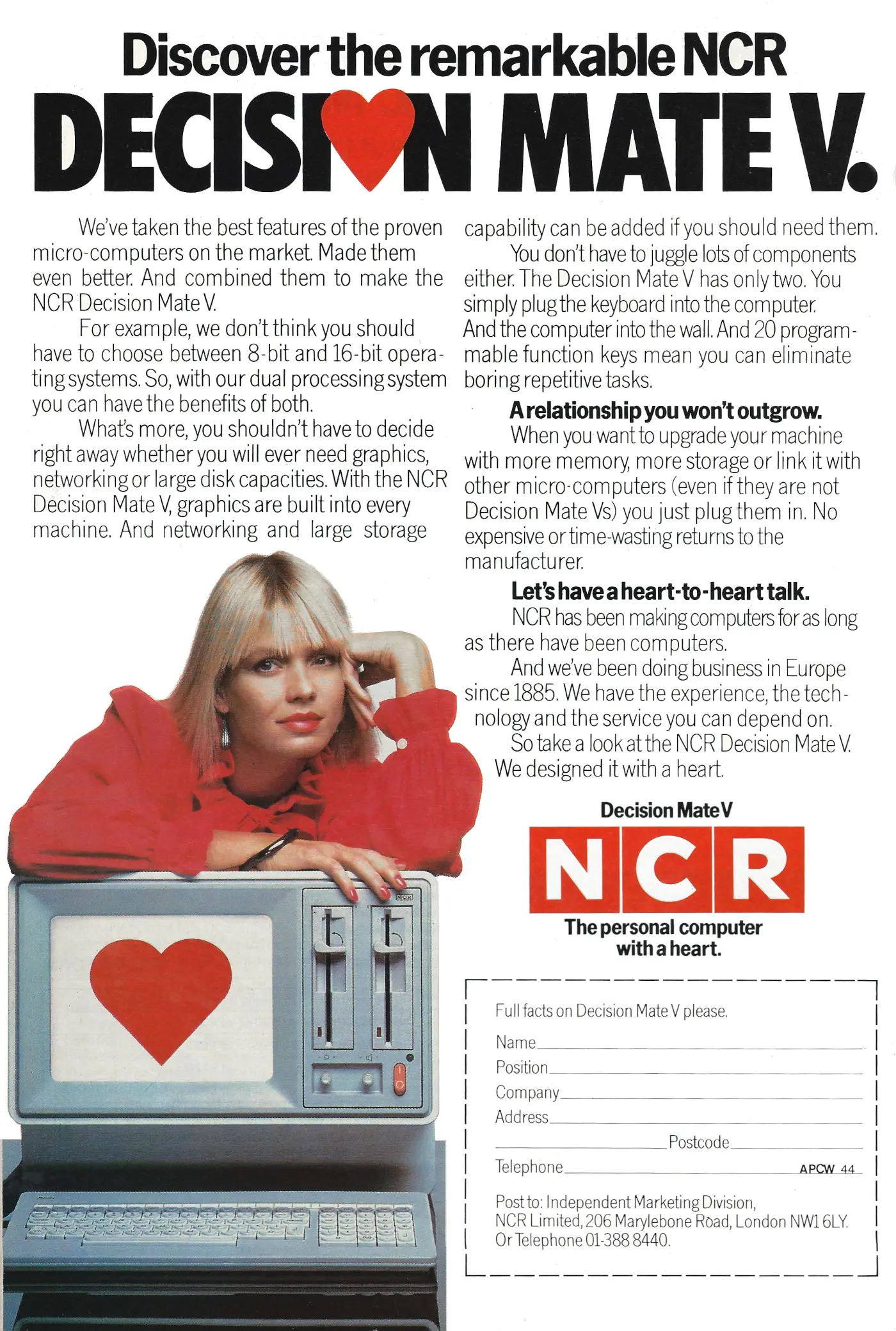
Discover the remarkable NCR Decision Mate V
Hot on the heels (well, not really) of 1962's NCR 390, comes National Cash Register's Decision Mate V.
It was a dual-processor machine, with an 8-bit Zilog Z80 and a 16-bit Intel 8088, two 360K floppy drives and a fairly hi-res (for the time) display of 576x432 pixels.
Slightly unusually, as well as a bog-standard ration of 64K RAM it also came with an additional 32K RAM just for the graphics. It initially ran CP/M - which at least gave access to thousands of software titles - but there were plans to move to CP/M-86 and MS-DOS on the 8088 in the future.
It was also modular, so whilst the out-of-the box system was ready to go and could be used immediately by first-time users, it was easy to plug in extras for more advanced purposes, like a re-badged version of the Corvus Omninet network[1].
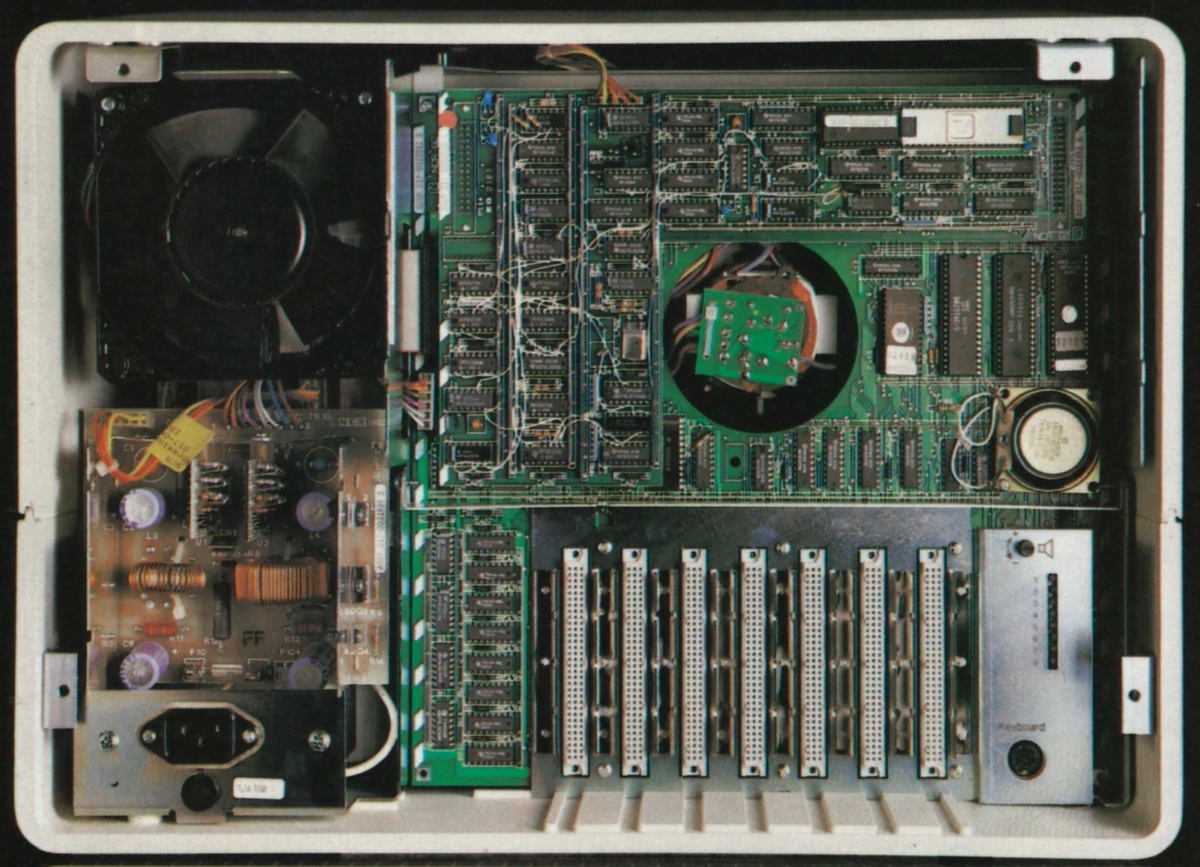
Inside a pre-production Decision Mate V, featuring some ad-hoc wire patching on the main PCB
NCR had previously been a mainframe and minicomputer manufacturer, however it was now facing a world which was moving towards more of a distributed computing approach, where microcomputers were being used as intelligent workstations in place of - and often cheaper than - the dumb terminals they were replacing.
David Tebbutt, whose very first job had been working for NCR on its then-brand-new 500 Series in 1965, wrote about the transition in August 1983's Personal Computer World, saying:
"Since the mainframe companies had things pretty much their own way when it came to these terminals, they could charge ridiculous prices for them and get away with it. Once micros came onto the scene with the ability to mimic any communications protocols, the more adventerous users started buying them - often at a lower cost than the terminals they were replacing. The micros had additional benefits like local floppy disk storage and printing facilities. These made them ideal for applicatinos such as word processing and spreadsheet tasks which didn't need the central mainframe computer. Suddenly, the micro, which until then had been dismissed by 'real computer' people as something of a toy, posed a serious threat to these large companies".
The review concluded mostly positively, with Tebbutt writing:
"NCR has made an impressive entry into the microcomputer marketplace. It seems to have played safe by looking around at what's good and popular and building from this kit of 'approved elements'. In places NCR seems to have gone adrift - the joystick springs to mind - but in the main it has got things right. Having chosen the elements of the machine, NCR has done an excellent job on the design and quality of construction. The machine would credit any office on looks alone. The price seems to be a bit too high for a usable basic unit. To this you would need to add a printer, but to a certain extent you are buying the company as well as the hardware and software. I'd take NCR very seriously - it is taking a very practical and serious approach to personal computers[2]".
The entry-level Decision Mate V - the single-processor 8-bit Z80 version - retailed for around £2,000, which is around £8,830 in 2025. The top-of-the-range model with the 8088 processor, colour display, MS-DOS and the 10MB Winchester upgrade could be had for £5,629 - a hefty £24,800 now.
NCR also had one of the oldest lineage of any computer company, with the advert claiming a business presence in Europe since 1885. That's 34 years more than Tandy (1919) and 26 more than IBM (1911).
Date created: 23 October 2014
Last updated: 02 February 2025
Hint: use left and right cursor keys to navigate between adverts.
Sources
Text and otherwise-uncredited photos © nosher.net 2025. Dollar/GBP conversions, where used, assume $1.50 to £1. "Now" prices are calculated dynamically using average RPI per year.
